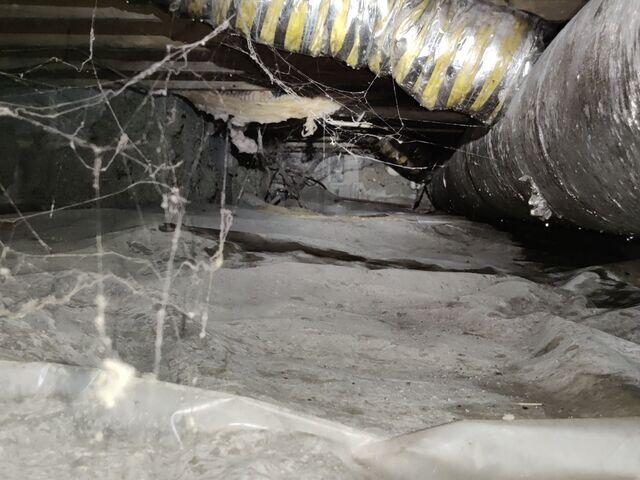
Dark and Dingy Crawl Space
Upon arrival, we found a dark and dirty crawl space with an inadequate plastic covering. This common issue highlights the misconception that any plastic sheet will suffice for encapsulation. Most store-bought tarps are too thin and ineffective at preventing humidity, often acting more like pool liners than proper vapor barriers.
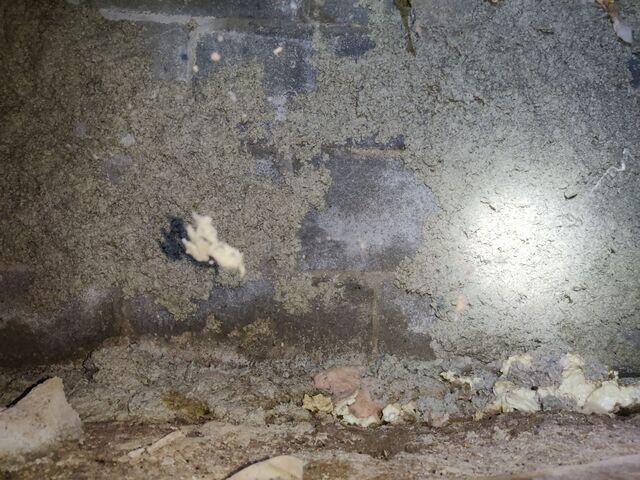
Insulation and Mold
The perimeter of the crawl space walls was covered in a mixture of mold and insulation. Insulation here acts like a sponge, soaking up humidity and creating a perfect environment for mold and mildew to thrive.

Perimeter of Walls
The combination of mold and insulation coated the entire perimeter, meaning that about 50% of the air inside the home, which originates from the crawl space, carries particles from this unhealthy buildup into the homeowners' lungs.
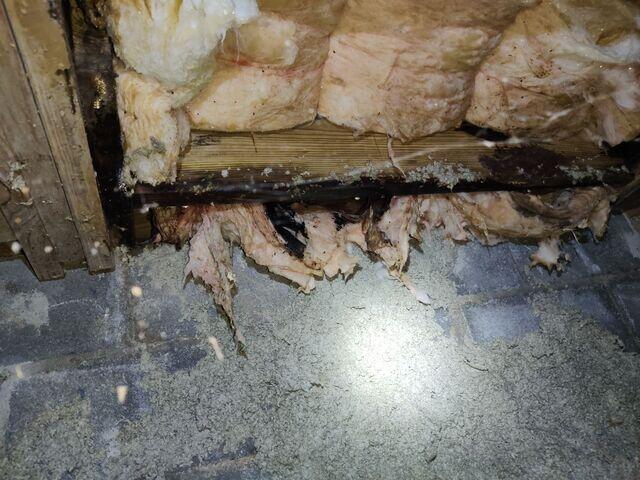
Falling Insulation
In this image, we can see deteriorating insulation falling between the joists. This insulation has absorbed excessive moisture, becoming a breeding ground for mold and mildew. Additionally, the wood has darkened due to water absorption, indicating potential rot.
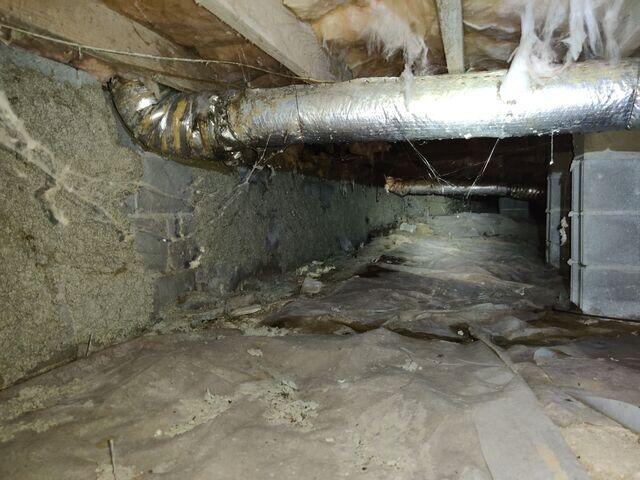
Widespread Issues
A view down the length of the crawl space reveals that these issues are widespread. To address the symptoms, our first step will be a full encapsulation, allowing the space to dry out before reassessing for further action.
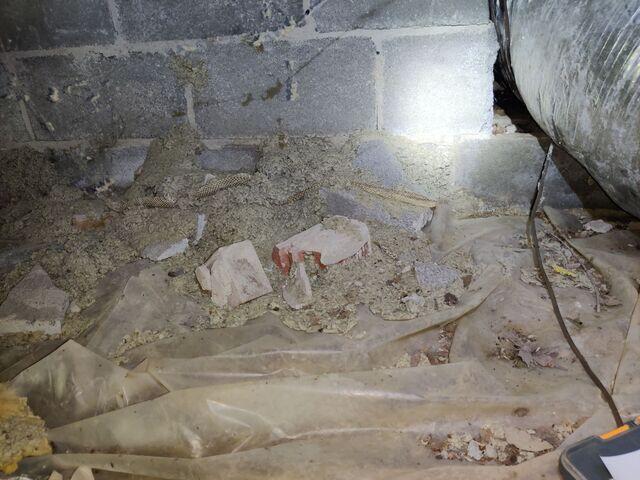
Evidence of Critters
No one wants to think about snakes or other critters in their home, but without proper encapsulation, there are numerous entry points for pests. This photo shows a snakeskin left behind in the debris, raising concerns about what else might be lurking.

Uncovered Ground
In some areas, there was no plastic covering at all, allowing groundwater to contribute directly to the air, further increasing humidity levels.
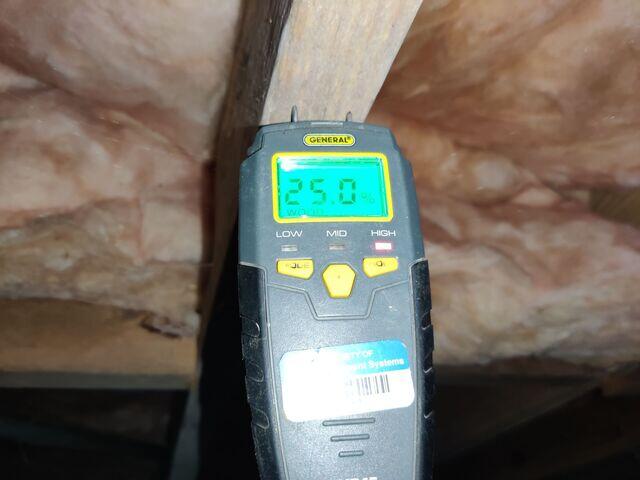
Alarmingly High Wood Moisture
Using a wood moisture meter, we found a 25% moisture content in the joist-far above the acceptable range of 7-19%. Ideally, we aim for readings below 12% to prevent mold growth, indicating that a dehumidifier and vapor barrier are essential.
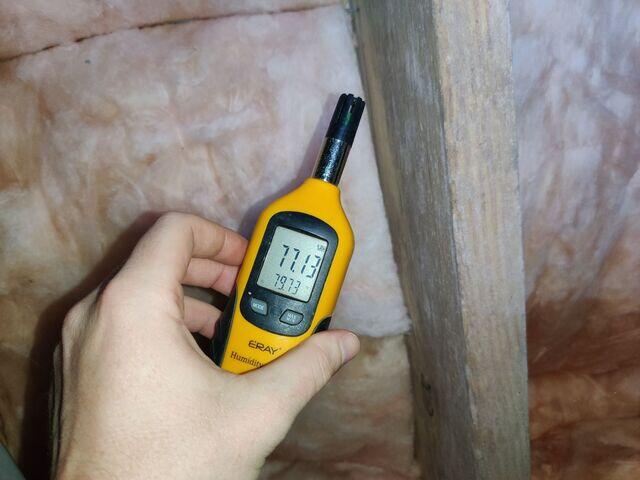
Concerning Humidity
The hygrometer showed a concerning relative humidity level of 77.13%. Anything above 55% fosters mold and mildew growth, making this a serious issue.
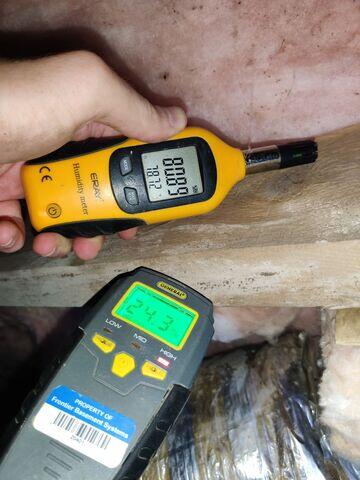
More Measurements
In another area, the hygrometer registered an alarming 80.89%, with the wood moisture measuring 24.3%.

Project Begins
As the project commenced, our team began by removing debris and sealing the crawl space vents. We then installed the CleanSpace vapor barrier, which is 20-mil thick and poly-reinforced to ensure durability.
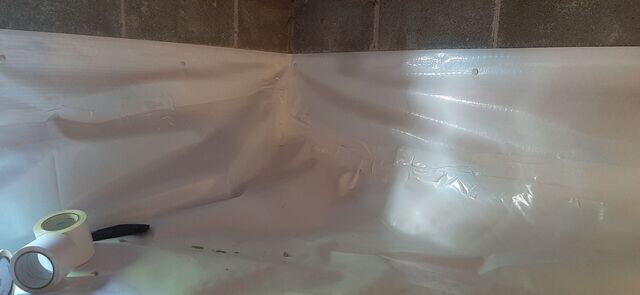
CleanSpace Applied
The CleanSpace was applied to both the walls and the ground. Specialty tape was used to create a tight seal along the perimeter.

Mold-Resistant Barrier
The CleanSpace vapor barrier contains an additive called UltraFresh, which is mold-resistant and helps prevent mildew growth. Coupled with the installation of the SaniDry Sedona dehumidifier, this will help maintain lower humidity levels.
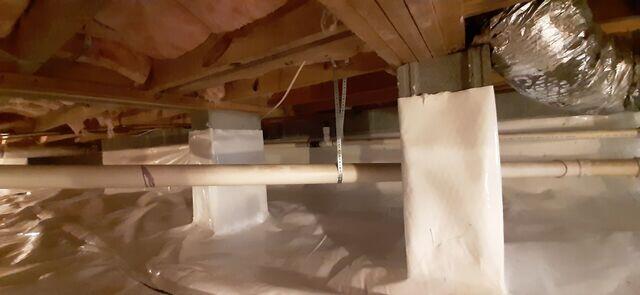
Completed Encapsulation
Once the installation was complete, the crawl space was transformed into a bright, clean area-an incredible improvement from its previous state before Frontier's intervention!
 4.9
4.9